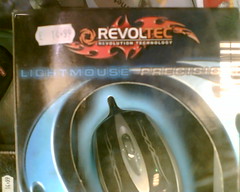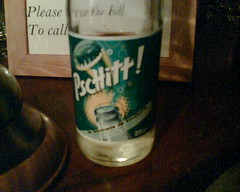The Null Device
2006/2/1
The designer of Comic Sans, possibly the most reviled typeface of recent times (mostly due to clueless people overusing it because it looks "cute", "fun" or otherwise endearing), explains himself and the origins of his disliked creation. Apparently Comic Sans was intended solely for internal use in Microsoft Bob (the cartoonish user interface originally intended for those who found the Windows interface too challenging), and the sole justification for its existence was that it looked more appropriate than Times New Roman in a speech balloon uttered by a cartoon dog. Then a Microsoft project manager noticed it and put it into Windows 95, and from then, there was no stopping its domination of notice boards, garage-sale/missing-pet signs and Geocities web pages made by the sorts of people who thought that animated GIFs and background MIDI files were very cool ideas.
After alleged British spies were caught in Russia using a wireless receiver hidden inside a rock to communicate with recruits (though it has been suggested that the story was partly if not wholly made up by Russian government agencies to justify a crackdown on non-government organisations), security guru Bruce Schneier's blog discusses the possibility of wireless "dead drops"; and, if anything, there would be less easily detectable ways of doing it than hiding a device in a rock:
Even better, hide your wireless dead drop in plain sight by making it an open, public access point with an Internet connection so the sight of random people loitering with open laptops won't be at all unusual.
To keep the counterespionage people from wiretapping the hotspot's ISP and performing traffic analysis, hang a PC off the access point and use it as a local drop box so the communications in question never go to the ISP.And various commenters propose other suggestions for undetectable ways of passing spy information to otherwise innocent-looking WiFi access points, and receiving it afterwards:
Replace one access point at a support provider for Starbucks and then have someone figure out which one it is after it's up. Use an asic mac filter to send traffic to a special part of the access point itself.
Port knocking on that dangling PC. The PC stays in stealth mode and only replies (briefly) when knocked upon.
Even better, how about hacking one's wireless configuration manager to hide the contraband data in unused header fields, passing it to a similarly hacked access point that would be an otherwise functional dead end. The spy's laptop wifi antenna could be accidentally left activated and innocently trying to associate with whatever WAP it sees (like my wife's does in our neighborhood). Hit the right WAP(s) and the data is passed.And then there is this suggestion:
All that spam you get in your in-box is merely steganography. The word "viagra" isn't mis-spelled to get around the spam filters, it's a complicated encoding allowing the spammers and their prospective recipients to exchange messages without anyone suspecting that there are people who want the message in the message. That's why spammers don't care if they send it to people who don't want it, their goal is to make people think of their communications as discardable trash, rather than something that may have a value.
It seems that someone somewhere decided that "Revoltec" would be a good name for a brand of computer peripherals:
Granted, they probably got the name from something like "Revolutionary Technology"; perhaps they neglected to run it past a native English speaker before going with it?
And then there's a brand of fizzy drink with a rather Jarryesque name:
